Imagine standing on a cliff, the waves crashing below, and a view of the endless Pacific Ocean stretching out before you. The beauty of the landscape is enhanced by vibrant, hardy plants that thrive in this coastal environment. From rugged succulents to delicate wildflowers, certain plants not only withstand the harsh coastal conditions but also complement the stunning scenery around them.
In this article, we’ll explore 26 plants that look stunning against the breathtaking backdrop of the Pacific Ocean. Whether you’re looking to add color, texture, or uniqueness to your coastal garden, these plants will bring life to your outdoor space while enhancing the natural beauty of the ocean. Get ready to discover the perfect plants that can withstand the salty air, the winds, and the sunny afternoons by the shore.
Bougainvillea
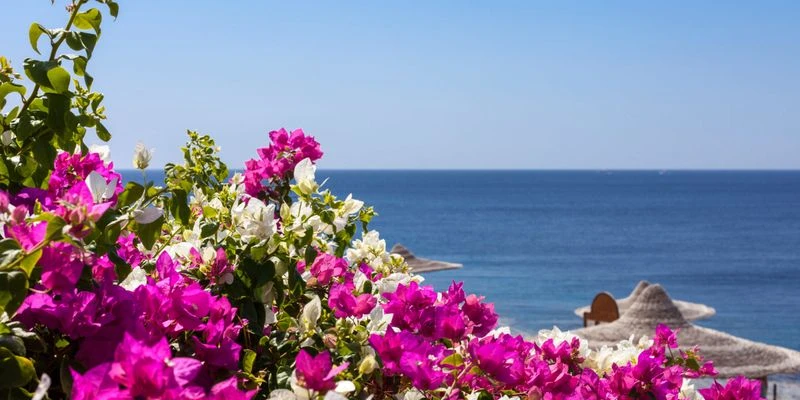
With its vibrant hues, bougainvillea offers a visual feast for the eyes. Its striking colors contrast beautifully against the blues of the ocean. This plant is perfect for climbing trellises, adding vertical interest to any coastal garden. Besides its visual appeal, bougainvillea is drought-tolerant. Its resilience makes it an excellent choice for seaside locations. The plant thrives in sunny areas with well-drained soil. Regular pruning will maintain its shape and encourage more blooms. Consider using bougainvillea to frame an ocean view, creating a picture-perfect scene.
Agave
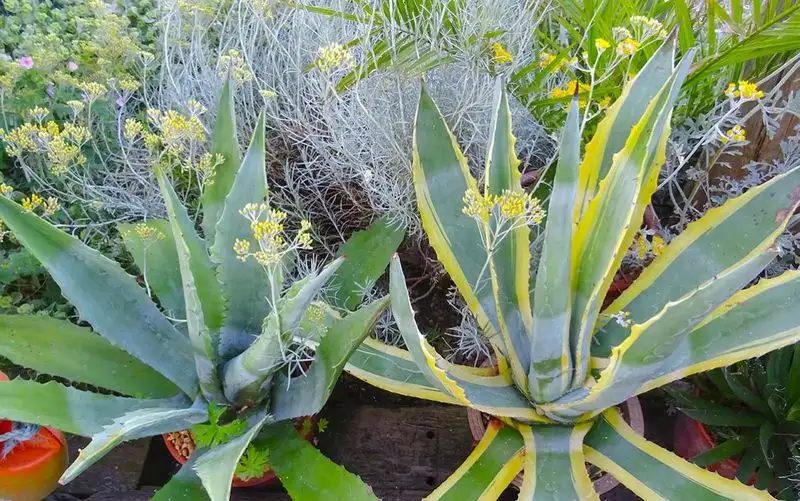
Agave plants bring a touch of the desert to coastal gardens. Their architectural form adds a modern touch to traditional landscapes. The thick, spiky leaves are not only visually appealing but also low-maintenance. Agave is highly drought-resistant, needing minimal water once established. This makes it ideal for the often dry and windy conditions near the ocean. Plant agave in well-draining soil to prevent root rot. Positioned carefully, it can become a focal point. Its bold silhouette stands out against the soft waves beyond.
Sea Lavender
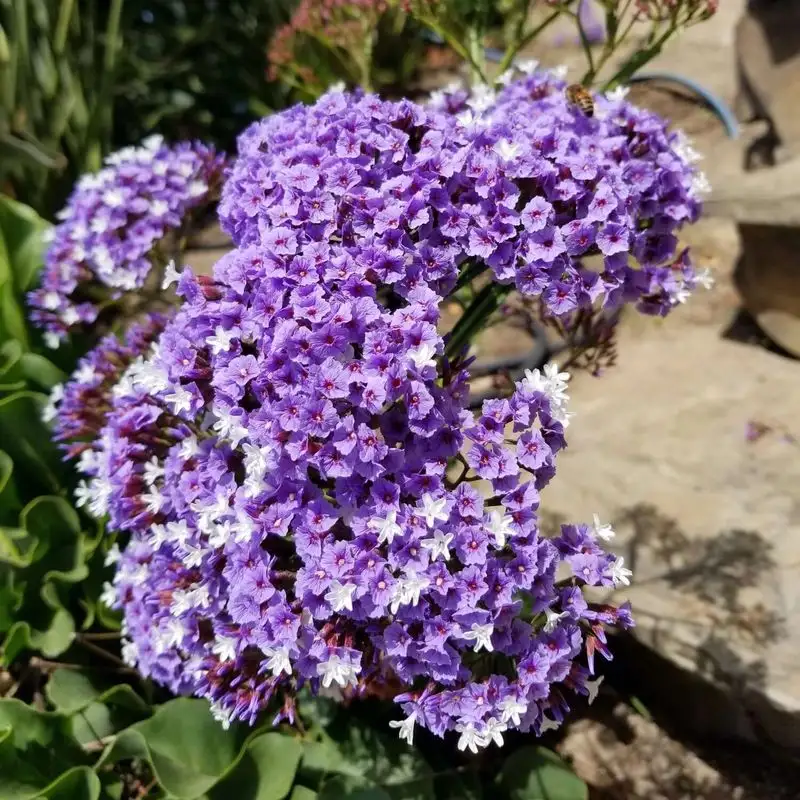
Sea lavender, with its delicate purple blossoms, is a charming addition to any ocean-side setting. Despite its dainty appearance, it’s hardy and salt-tolerant, thriving where other plants might struggle. The tiny flowers form in clusters, creating a soft purple haze that sways in the breeze. Perfect for borders or rock gardens, sea lavender requires little maintenance. It attracts pollinators, adding life to your garden. Plant it where its delicate beauty can be appreciated, such as along pathways or near seating areas.
Japanese Blood Grass
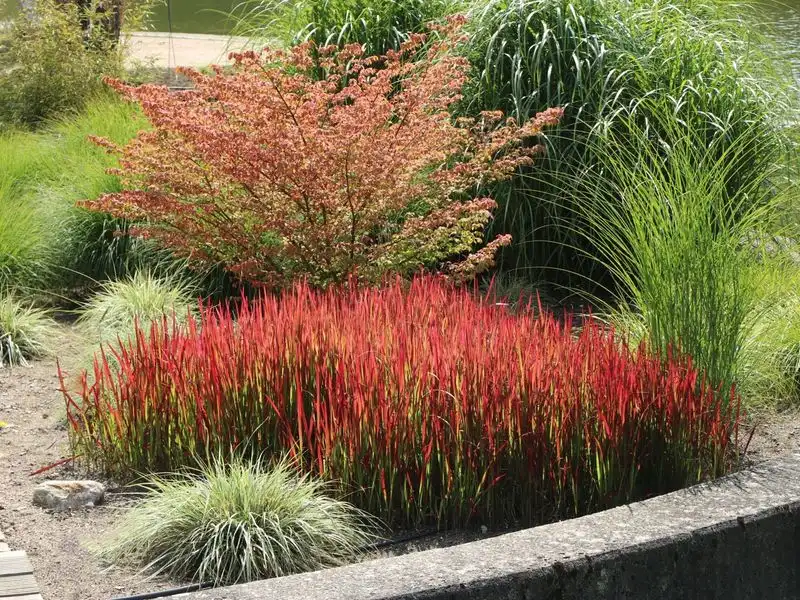
Japanese Blood Grass is known for its striking red-tipped blades. This ornamental grass adds a splash of color to coastal gardens. Its vibrant hues are most intense during late summer and early fall. The plant is low-maintenance, only needing occasional trimming. It thrives in full sun to partial shade and prefers moist, well-drained soils. Japanese Blood Grass pairs well with other grasses or perennials. Its dynamic color shift creates visual interest throughout the seasons. Consider planting it in mass for a dramatic effect against the ocean backdrop.
New Zealand Flax

New Zealand Flax features long, sword-like leaves that create a bold statement. Its architectural structure makes it a standout in any coastal landscape. Available in various colors, from green to bronze, it complements diverse design palettes. This robust plant is resistant to salt spray, making it perfect for seaside gardens. It thrives in well-drained soils and full sun but tolerates some shade. New Zealand Flax is versatile, suitable for both modern and traditional settings. Use it to line pathways or as a dramatic focal point.
Beach Aster
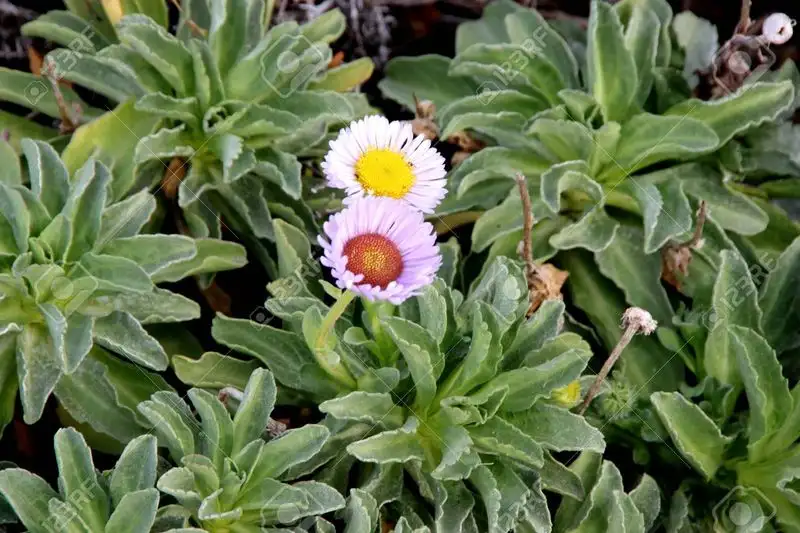
Beach Aster brings sunny cheer to coastal environments with its bright yellow blooms. This resilient plant tolerates sandy soils and salt exposure, common in seaside locations. Its low-growing habit makes it ideal for ground cover in dunes or rocky areas. Blooms appear in late spring to early summer, attracting butterflies. It’s a low-maintenance choice, needing minimal watering once established. Plant Beach Aster in full sun for best results. Its cheerful blooms and hardy nature make it a delightful addition to any coastal garden.
Silver Ragwort

Silver Ragwort offers a striking contrast with its silvery foliage, making it a standout in coastal gardens. The silvery leaves reflect sunlight, adding brightness and texture. This plant is drought-tolerant and thrives in sandy, well-drained soils. It’s also resistant to salt spray, perfect for ocean-side planting. Silver Ragwort’s low-growing habit makes it ideal for borders or ground cover. It pairs beautifully with colorful blooms or other silvery plants. Use it to add texture and color contrast, enhancing your garden’s visual appeal.
Coastal Rosemary
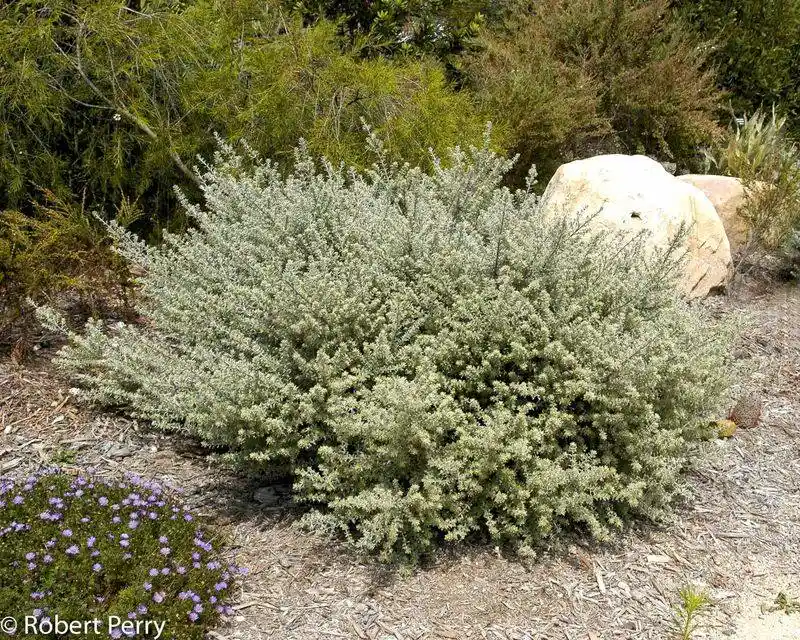
Coastal Rosemary is a hardy shrub that thrives in seashore environments. Its aromatic leaves and small white flowers create a pleasant sensory experience. This plant stands up well to harsh coastal winds and salt spray. It requires well-drained soil and full sun. Pruning will encourage denser growth and more blooms. Coastal Rosemary is perfect for hedges or borders, offering a natural screen against the wind. Its resilience and aromatic qualities make it a valuable addition to any ocean-view garden.
Sea Holly
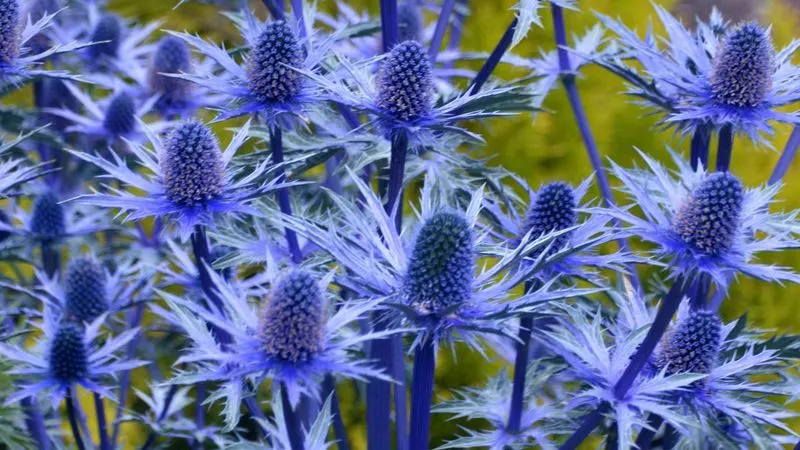
Sea Holly is a stunning plant known for its unique blue thistle-like flowers. This hardy plant is perfect for coastal conditions, tolerating sandy soils and salty air. The spiky blooms add texture and a pop of color to gardens. Sea Holly attracts pollinators, supporting local wildlife. It requires minimal care, thriving in full sun and well-drained soil. Use it in borders or as an eye-catching focal point. Its distinctive appearance and resilience make it a standout choice for any coastal landscape.
Ice Plant
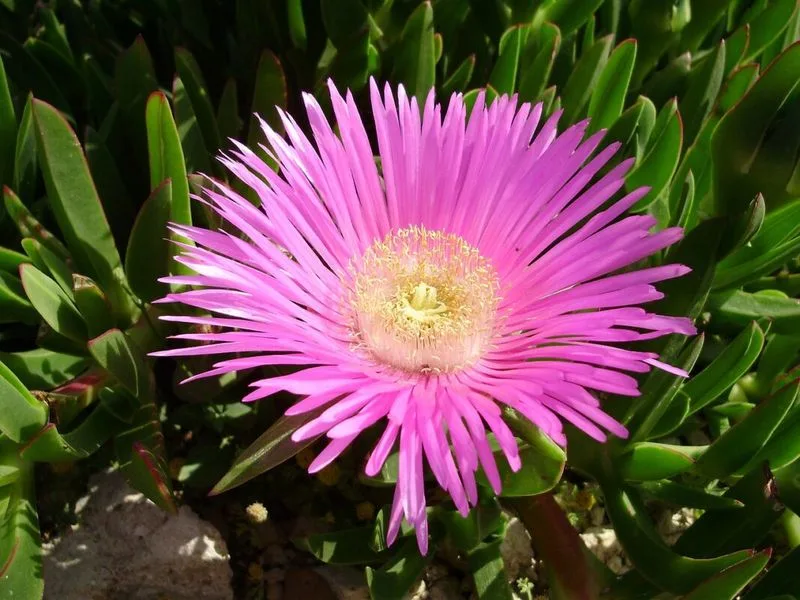
Ice Plant is celebrated for its vibrant flowers and succulent leaves. This ground cover thrives in sandy soils and salty air, perfect for coastal gardens. The daisy-like flowers bloom in vibrant shades, creating a colorful carpet. Ice Plant needs little water once established, making it a low-maintenance choice. It’s ideal for erosion control on slopes or dunes. Plant it in full sun for the best blooms. Its bright flowers and tough nature make it a practical yet beautiful addition to seaside landscapes.
Cordyline
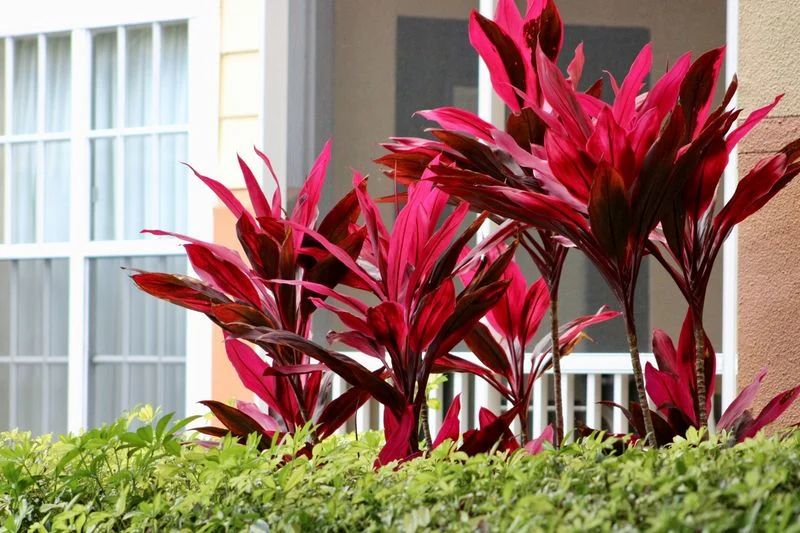
Cordyline stands out with its long, colorful leaves that add a tropical flair to coastal gardens. This plant is adaptable, thriving in various conditions, including salt-laden winds. Cordyline prefers well-drained soil and full to partial sun. Its bold foliage comes in hues from green to red, offering a striking visual impact. Consider using it as a focal point in garden beds or containers. Cordyline’s vibrant colors and hardy nature make it an excellent choice for adding interest to ocean-view landscapes.
Beach Daisy
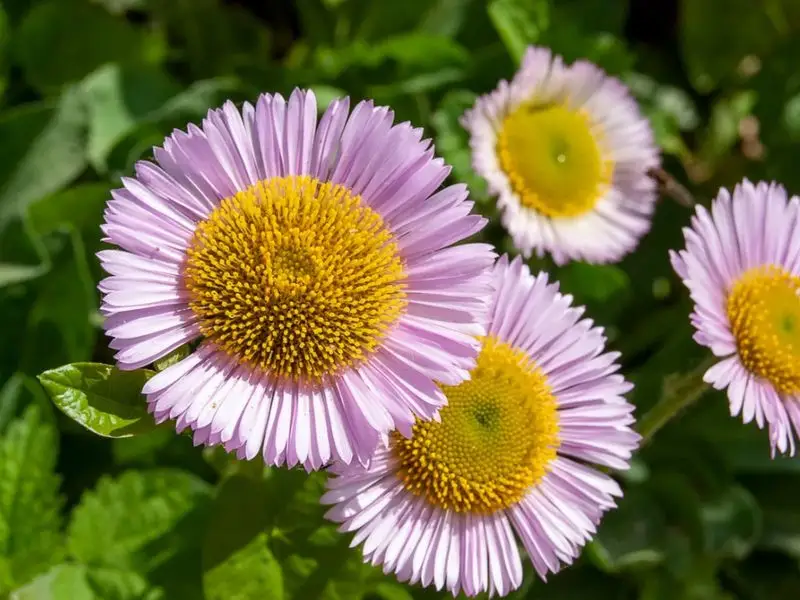
Beach Daisy offers vibrant yellow blooms that bring cheer to coastal gardens. This hardy plant thrives in sandy soils and withstands salty winds. Its low-growing habit makes it perfect for ground cover or filling gaps in rock gardens. Beach Daisy blooms from late spring through summer, attracting butterflies and bees. It requires full sun for optimal growth and minimal watering once established. Use it to brighten pathways or add color to dunes. Its sunny disposition and tough nature make it a reliable choice for seaside landscapes.
Aloe Vera

Aloe Vera is not only known for its medicinal properties but also its sculptural beauty. This succulent thrives in sandy, well-drained soils, making it ideal for coastal gardens. Aloe Vera requires minimal water and can withstand salty air, typical of ocean-side locations. Its thick, fleshy leaves store water, enhancing its drought-resistant nature. Use Aloe Vera as a focal plant in rock gardens or containers. Its architectural form adds interest, while its healing qualities provide practical benefits. A versatile and attractive choice for any coastal setting.
Kangaroo Paw
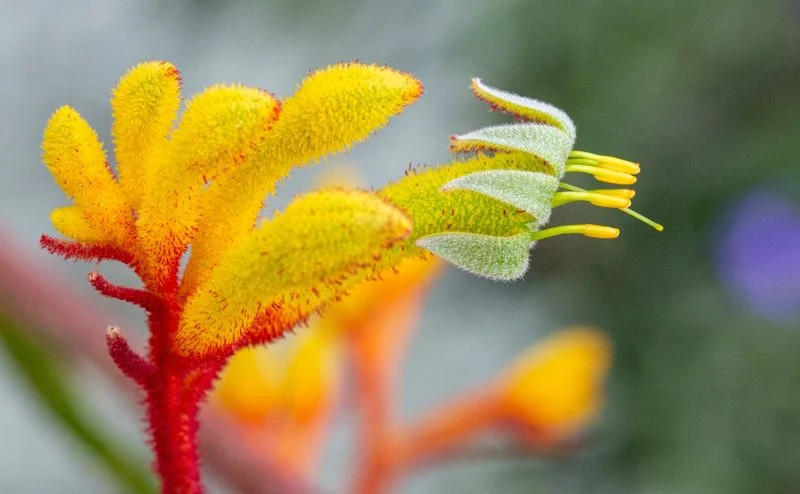
Kangaroo Paw features unique, tubular flowers resembling kangaroo paws. This Australian native thrives in sunny coastal gardens. It requires well-drained soil and occasional watering. The vibrant flowers come in colors like red, green, and yellow, attracting birds and pollinators. Kangaroo Paw adds an exotic touch to garden beds or containers. Its striking blooms contrast beautifully against the ocean’s blue hues. Regular deadheading will encourage more blooms and maintain its appearance. A conversation starter, this plant adds both charm and color to seaside gardens.
Lavender
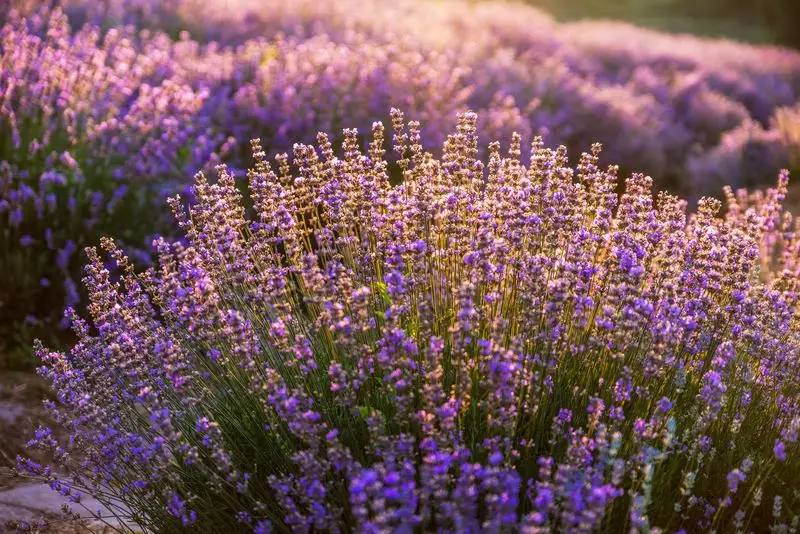
Lavender is a beloved plant known for its aromatic purple flowers. It thrives in sunny, well-drained locations, making it ideal for coastal gardens. Lavender is drought-tolerant and can withstand salty winds, common in seaside areas. The fragrant blooms attract bees and butterflies, enhancing the garden’s ecosystem. Use lavender along pathways or in borders for a sensory experience. Its calming scent and beautiful flowers make it a favorite among gardeners. Lavender’s resilience and charm make it a classic choice for ocean-view landscapes.
Creeping Jenny
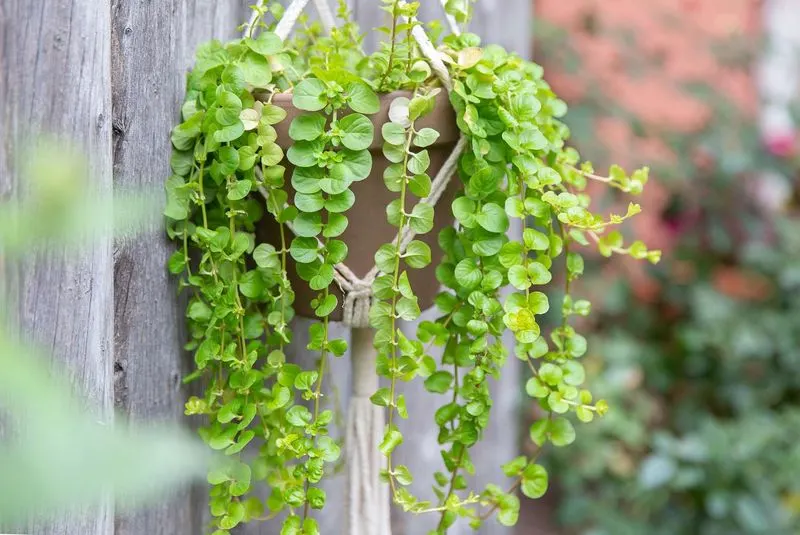
Creeping Jenny is a versatile ground cover with lush green foliage. This plant thrives in moist, well-drained soils and partial sun. Its trailing habit makes it perfect for cascading over rocks or along pathways. Creeping Jenny adds texture and color to coastal gardens. It’s ideal for filling gaps between other plants or softening hardscape edges. This plant requires minimal maintenance, making it a practical choice for busy gardeners. Its vibrant green leaves and adaptability make Creeping Jenny a valuable addition to any seaside setting.
Echium
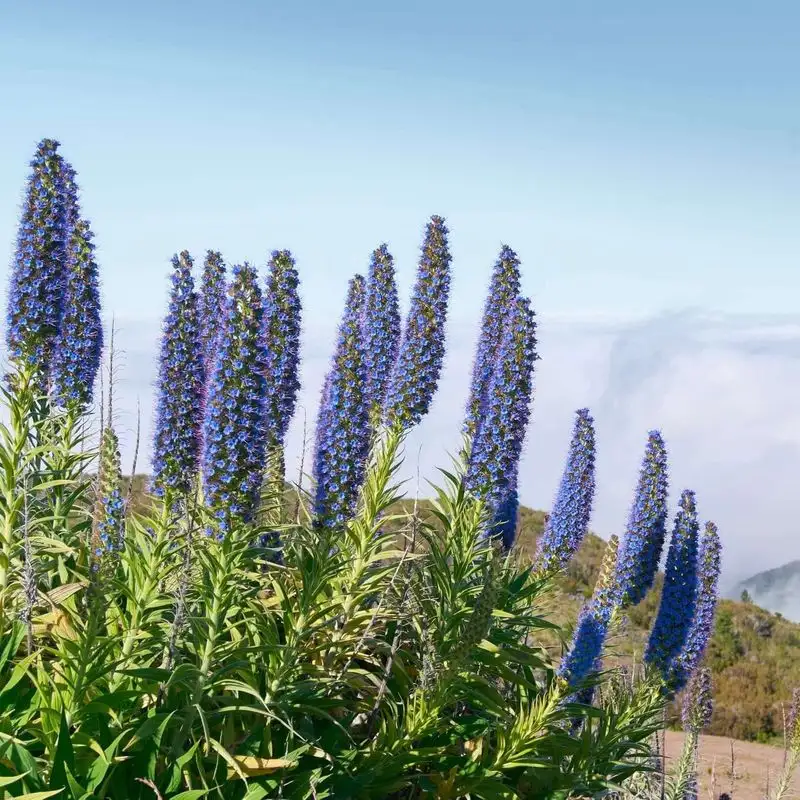
Echium is known for its tall spikes of blue flowers that add drama to coastal gardens. This plant thrives in sunny, well-drained locations and is tolerant of salty air. Echium’s towering blooms attract bees and butterflies, bringing life to the garden. It requires minimal watering, making it suitable for dry coastal conditions. Use it as a focal point or in mass plantings for visual impact. Its striking flowers and hardy nature make Echium a standout choice for ocean-side landscapes.
Sedum
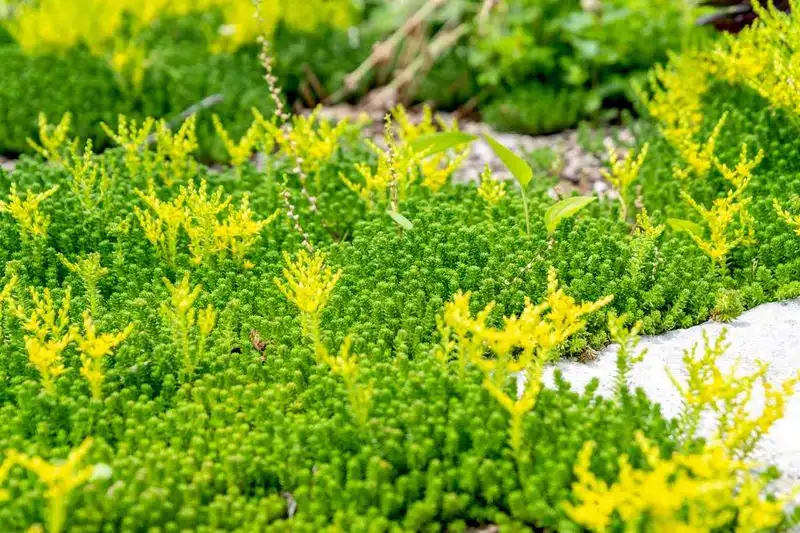
Sedum is a hardy succulent known for its star-shaped flowers and fleshy leaves. This plant thrives in sandy, well-drained soils, making it ideal for coastal gardens. Sedum requires minimal watering and can withstand salty air. Its blooms come in various colors, adding interest throughout the seasons. Use sedum in rock gardens or as ground cover in sunny locations. Its low-maintenance nature and adaptability make it a practical choice for ocean-view landscapes. Sedum’s beauty and resilience ensure it remains a garden favorite.
Gazania
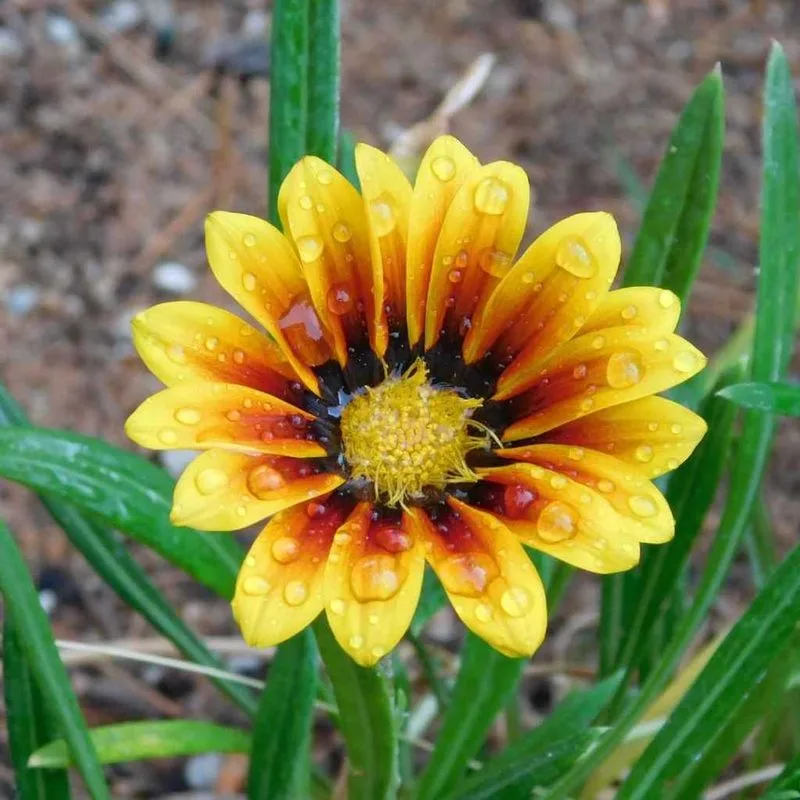
Gazania offers a burst of color with its bright orange and yellow flowers. This plant thrives in sunny, sandy locations, perfect for coastal gardens. Gazania is drought-tolerant and can withstand salty winds. Its daisy-like blooms close at night and open with the morning sun. Use gazania in borders, rock gardens, or as ground cover. Its vibrant flowers and tough nature make it a cheerful addition to seaside landscapes. Gazania’s ability to thrive in challenging conditions makes it a reliable garden choice.
Californian Poppy
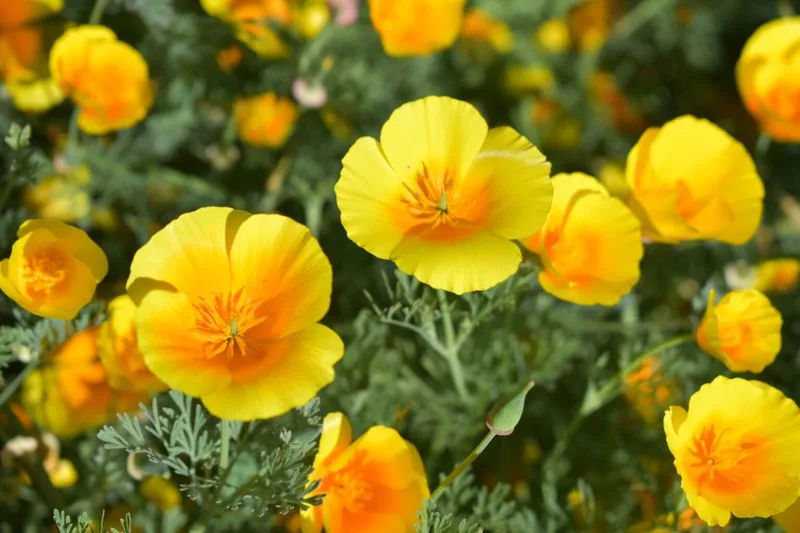
The Californian Poppy is a native beauty that thrives in coastal gardens. Its vibrant orange flowers contrast beautifully with the ocean’s blues. This plant requires full sun and well-drained soil, tolerating dry conditions once established. The poppy’s bright blooms attract pollinators, adding life to your garden. Use it in mass plantings for a dramatic effect or scattered among other plants for bursts of color. Its carefree nature and striking appearance make the Californian Poppy a beloved choice for ocean-side landscapes.
Ornamental Grasses
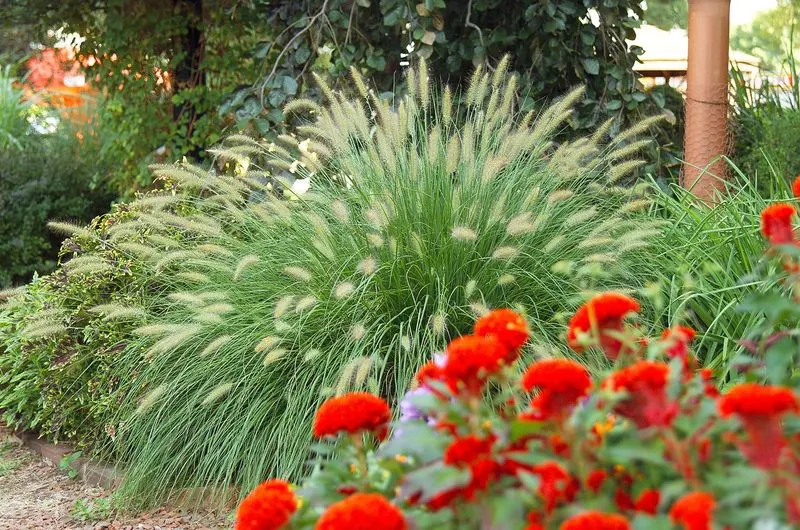
Ornamental grasses add movement and texture to coastal gardens. Their feathery plumes sway gracefully in the breeze, creating a dynamic landscape. These grasses are drought-tolerant and adaptable, thriving in sandy, well-drained soils. Use them to soften hardscape elements or line pathways. Their varied heights and colors provide visual interest year-round. Plant ornamental grasses in clusters for best effect, allowing them to catch the wind and create natural soundscapes. Their resilience and beauty make them a versatile choice for ocean-view settings.
Fuchsia
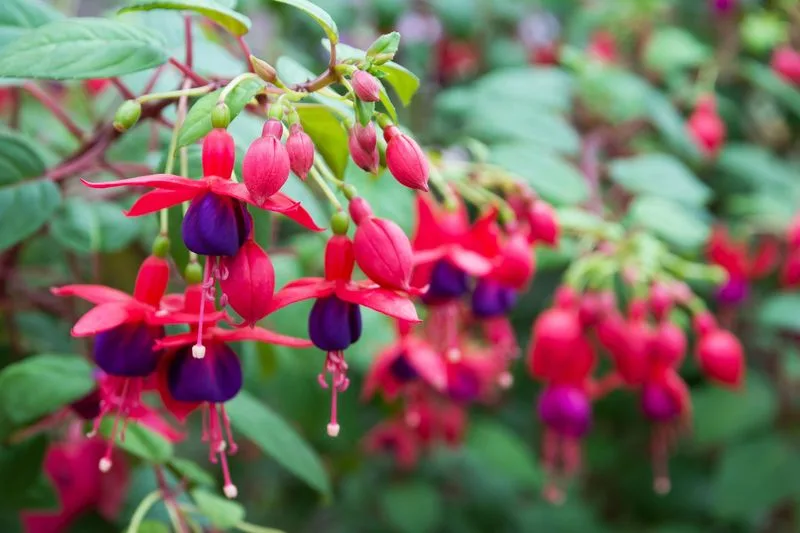
Fuchsia is renowned for its vibrant, pendulous flowers that add a splash of color. This plant thrives in coastal conditions, preferring partial shade and well-drained soil. Fuchsia requires regular watering to maintain its blooms. Its flowers attract hummingbirds and add charm to garden settings. Use fuchsia in hanging baskets or containers where its trailing habit can be appreciated. Its vivid colors and delicate blooms make it a standout choice for adding interest and life to ocean-view gardens.
Oleander
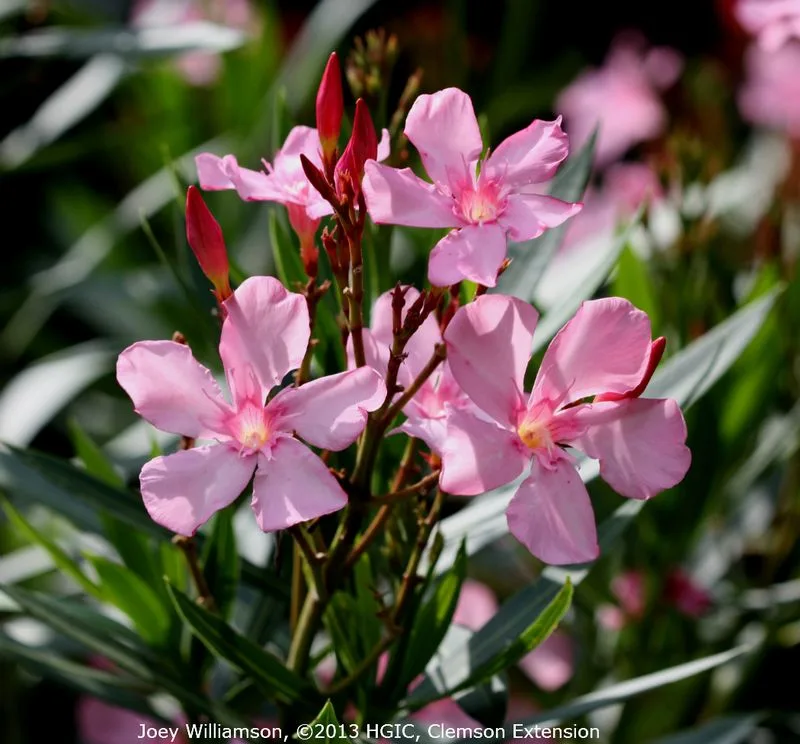
Oleander is a robust shrub known for its clusters of pink, white, or red flowers. It thrives in sunny coastal gardens, tolerating salty air and sandy soils. Oleander requires minimal maintenance, making it an ideal choice for busy gardeners. Its dense foliage provides privacy, while its blooms add color throughout the summer. Use oleander as a hedge or focal point in garden beds. Its tough nature and vibrant flowers ensure it remains a popular choice for seaside landscapes.
Yucca
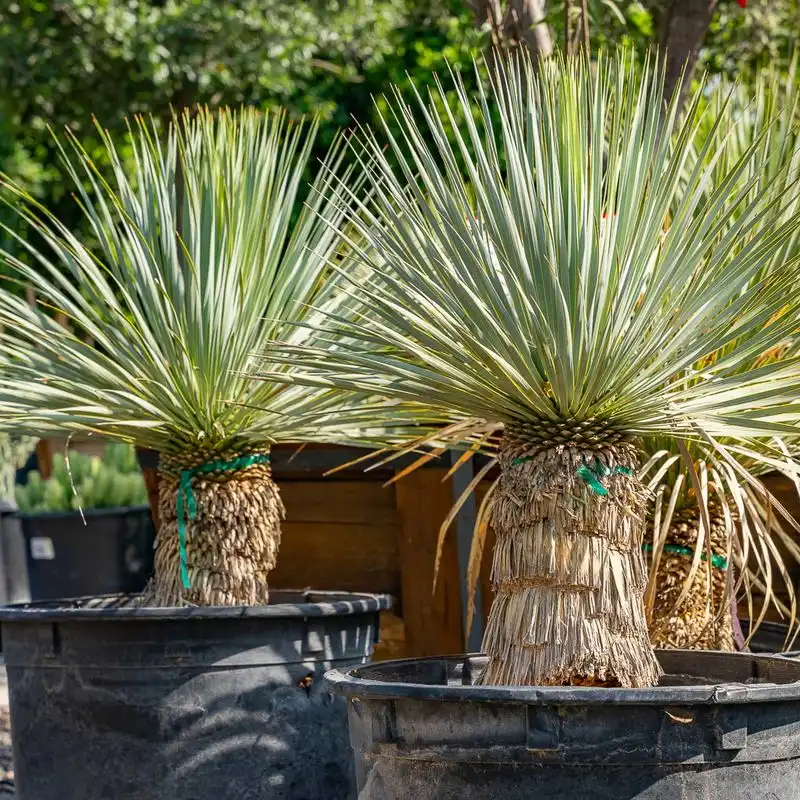
Yucca adds a touch of the desert to coastal gardens with its spiky leaves and tall flower spikes. This plant is highly drought-tolerant, thriving in sandy, well-drained soils. Yucca’s architectural form creates visual interest and serves as a focal point. It requires full sun and minimal watering once established. Use yucca in rock gardens or as a statement plant in garden beds. Its striking appearance and hardy nature make it an excellent choice for ocean-side landscapes.
Lantana
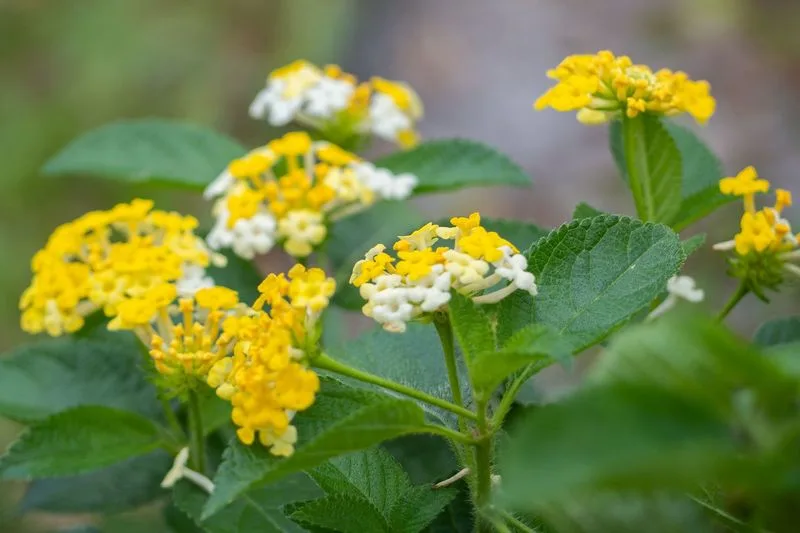
Lantana offers clusters of multicolored flowers that provide long-lasting blooms. This plant thrives in sunny, coastal locations, tolerating salty winds and sandy soils. Lantana requires minimal care, making it a practical choice for busy gardeners. Its flowers attract butterflies and add vibrancy to garden settings. Use lantana in borders, containers, or as ground cover. Its cheerful blooms and tough nature make it a delightful addition to seaside landscapes. Lantana’s ability to withstand harsh conditions ensures it remains a garden favorite.
Dragon Fruit Cactus
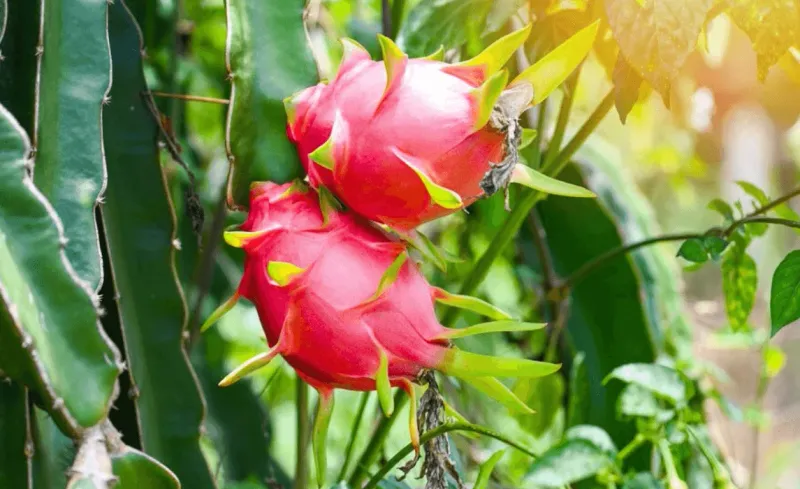
The Dragon Fruit Cactus, known for its exotic appearance, becomes a stunning spectacle against the Pacific’s dynamic backdrop. Its vibrant pink and white blooms emerge at night, offering a surreal, almost mystical allure. The cactus’s sprawling green arms provide a stark contrast to the ocean’s deep blue, enhancing its dramatic appeal.
Its fruits, bright magenta and filled with subtle sweetness, add a touch of the tropics to coastal gardens. Despite its unusual look, the Dragon Fruit Cactus is easy to care for, thriving in well-drained soil and basking in full sun. Embrace this bold choice to elevate your oceanfront landscape.

